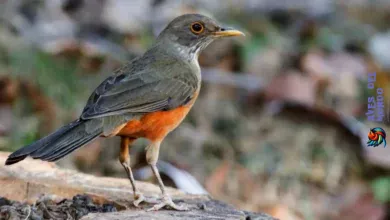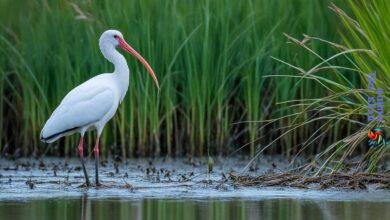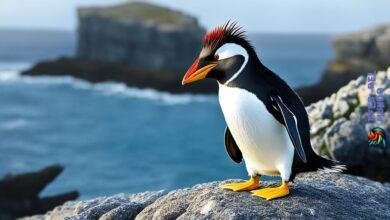Did you know the bird world has over 10,000 species? Each has its own unique feather colors. This ranges from the soft tones of sparrows to the bright iridescence of hummingbirds. So, why do some birds have colorful feathers while others are more plain?
We often wonder about the colors of bird feathers. Their colors come from complex reasons tied to survival, mating, and the environment. Every color in a bird’s feathers has its own story of adaptation and beauty. What causes these amazing color variations, and how do they help birds survive?
The beauty of bird feathers is more than just looks. It represents an evolutionary mystery tied to nature. Birds’ colors are crafted by nature for many purposes. These purposes include attracting mates, scaring off enemies, or hiding in their surroundings. There’s a lot of science in every color.
Exploring the Role of Sexual Selection in Bird Coloration
When you look at the wonderful colors in bird feathers, you’re seeing nature’s art. This art is driven by sexual selection, a term Charles Darwin explored. Bright feathers in male birds are not just for looks. They are crucial for attracting mates.

The Theory of Sexual Dichromatism
Sexual dichromatism is a fancy name for a simple idea: male and female birds often look different. This difference comes from sexual selection. Males have brighter colors to attract females. It’s nature’s way of saying, «I’m the best partner for you.»
Darwin’s Insights on Female Preferences
Darwin noticed that female birds pick their mates carefully. They look for signs of good genes or the ability to adapt to the environment. It’s a choice that affects their future children. This process mixes natural selection with personal preferences in a beautiful dance of evolution.
| Feature | Function | Related to Sexual Selection |
|---|---|---|
| Bright Male Plumage | Attracts female attention | Yes |
| Long, Ornate Tails | Signals viability to females | Yes |
| Dull Female Plumage | Camouflage from predators | No |
| Subtle Male Colors | Less of a target for rivals | No |
In summary, the beautiful feathers we see are more than just pretty. They play a big part in bird communication and mating success. From the peacock’s impressive tail to the sparrow’s quiet beauty, each feature has a role. It’s all shaped by sexual selection and the choices of female birds.
Survival vs. Attraction: The Trade-Offs of Avian Coloration
The vividness of avian feather pigmentation is both a blessing and a risk for birds. It ties closely to sexual selection and survival. Bright or subtle colors are key in attraction among bird species, often deciding who will mate successfully. However, these same colors can make birds more visible to predators, risking their survival. Let’s explore how birds balance the need to attract mates with the need to stay safe.
In places with many predators, female birds often choose duller colors. This helps them blend in, especially while nesting. Such colors are an adaptive strategy, influenced by plumage color genetics, to ensure species survival. Meanwhile, males might show off brighter colors since attracting a mate is more important to them than avoiding predators.
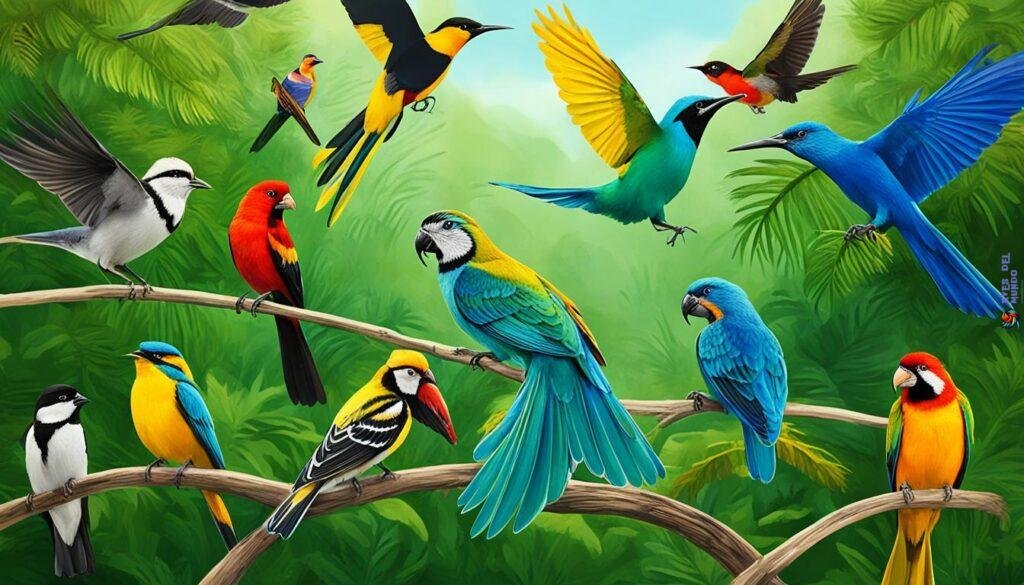
Bright colors suggest a bird is healthy and genetically fit, while some patterns can confuse predators. This dynamic between visibility and protection drives the evolution of bird species. Birds must balance between standing out and blending in.
Birds have evolved a complex relationship with their surroundings, deciding when to show or hide their colors. This careful selection leads to a world where colors thrive at different times and places.
Consider this table, which shows how survival and attraction shape the coloration of two bird species:
| Bird Species | Survival Adaptations | Attraction Features |
|---|---|---|
| Nesting Ground Birds | Duller colors for camouflage in ground foliage | Limited bright coloration to reduce predation risk |
| Tree Hollow Nesters | Camouflaged plumage less necessary due to protected nesting | Vibrant colors utilized by both sexes, visible only during flight or in the nest |
Looking at birds, we see that their beautiful colors result from genetics, the environment, and survival strategies. This balance gives us a deeper understanding of nature and its marvels.
Color as a Competitive Advantage Among Males
In the world of birds, male-male competition is key. It shows how vital visual signals are for winning fights and getting a mate. The complexity of plumage color genetics boosts a bird’s look and helps in fights and mate choice.
Beautiful feathers do more than look good. They show key behaviors for a bird’s life. These colors show health and are tied to avian feather pigmentation. Bird scientists and enthusiasts find this topic very interesting.
The Red Shoulder Patch of Red-winged Blackbirds
The red-winged blackbird uses bright colors as a signal. Its fiery red shoulder patch marks its area and keeps rivals away. This signal shows a male’s health and strength, which is vital for keeping territory.
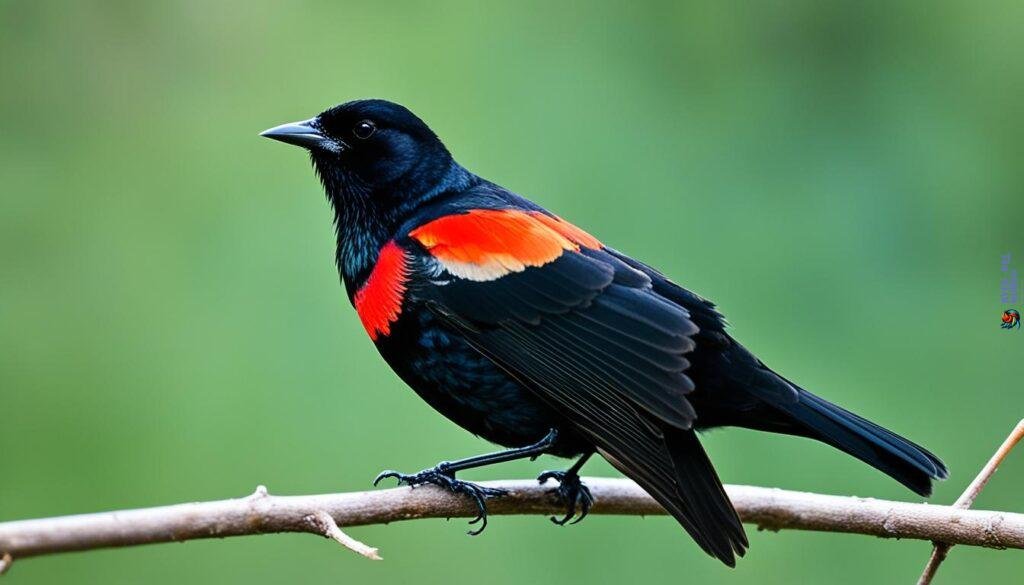
Plumage Brightness as a Health Indicator
Plumage brightness shows more than just beauty. It’s a sign of health, showing a male bird’s diet and genetic fitness. For example, a house finch’s bright color means a good diet with carotenoids. This makes males more attractive to females, linking bright colors to health and mating success.
So, when exploring the bird world, notice the colors. They make nature beautiful but also help in bird survival and mating.
The Importance of Pigments: Melanin and Carotenoid in Feathers
Understanding avian feather pigmentation is key to enjoying birds’ color variety. This comes mainly from melanin, which gives darker shades, and carotenoids, for bright reds, oranges, and yellows. Learning about feather color genetics reveals stories of survival, mate attraction, and diet effects.
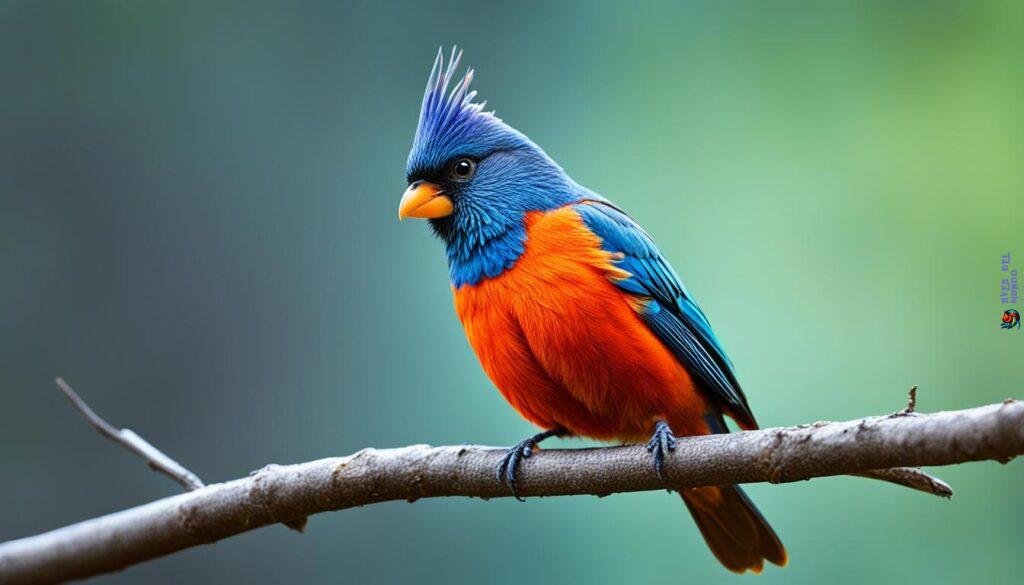
House Finches: A Case Study
The house finch shows how carotenoid in feathers works well. Their colors vary from soft yellows to deep reds. The depth of color indicates their health and stamina.
In the complex world of bird interactions, color can help in finding a partner and breeding successfully.
The Role of Diet in Color Variation in Bird Feathers
Diet is crucial for the color variation in bird feathers. House finches with diets rich in carotenoids show richer colors. This shows how crucial a good environment is for vibrant feather colors.
| Pigment Type | Color Manifestation | Dietary Sources | Functional Significance |
|---|---|---|---|
| Melanin | Darker tones (browns, blacks) | Endogenously produced | Protection from UV, structural strength |
| Carotenoids | Vibrant colors (reds, yellows, oranges) | Fruits, seeds, and other carotenoid-intensive foods | Signals health and foraging efficiency |
In exploring avian feather pigmentation, we see melanin and carotenoids do more than beautify. They also give birds a survival advantage. The story of feather color genetics is a tale of evolution, showing how traits adapt over time.
The Evolution of Colors in Feathers
The world of birds is full of colors, a key part of their evolution. Their feathers are not just random; they’re the result of millions of years of change. This has to do with both survival and attractiveness.
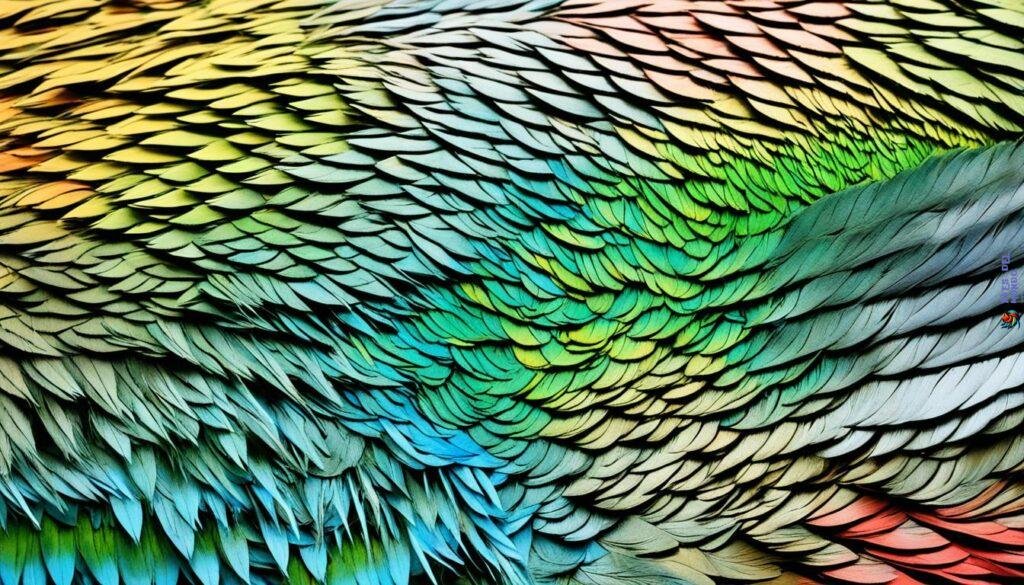
Research into why birds have different colored feathers is fascinating. These colors come from a long history of adapting. They help in attracting mates, hiding from predators, and looking good.
Distinguishing Between Structural and Pigment-Based Colors
There are two main reasons for the colors in feathers. First are the pigment-based colors. These come from substances like melanins and carotenoids. They give birds their earthy and bright colors.
Then, we have structural colors. These happen because of how feathers are built. They bend light, making shiny greens and blues. It’s amazing how evolution works with light and color.
Ultraviolet Perception and Its Impact on Avian Coloration
Birds see colors differently than we do. They can see ultraviolet light. This changes how they choose mates and recognize each other.
What we see is not what birds see. Their feather colors are about more than what meets the eye. They mix visible colors with ultraviolet, creating a unique look.
The evolution of feather colors is a complex story. It’s about beauty and the need to survive. As we learn more, we understand how special birds really are.
Reverse Roles and their Influence on Female Bird Coloration
Understanding how reversed sex roles affect avian feather pigmentation is quite fascinating. When females and males switch usual roles, we see changes in bird colors. Specifically, females in these scenarios often show off brighter, more intricate feathers to attract males.
In cases with reversed roles, where males care for the eggs, sexual selection norms shift. This shift brings interesting changes in how birds look, especially in avian feather pigmentation. By looking closely at certain bird species, we can see how these role reversals change their feathers.
| Species | Reversed Role | Impact on Female Plumage |
|---|---|---|
| Phalaropes | Males incubate eggs | Females display brighter colors to attract males |
| Sandpipers | Males handle nesting | Inverted sexual dimorphism with more ornate females |
| Button Quail | Males rear chicks | Females exhibit pronounced plumage for courtship |
These examples show reversed sex roles change what we expect in bird coloration. Instead of males showing vibrant colors, females do to attract mates. This switch influences bird coloration in surprising ways.
Keep in mind, reversed roles make females the more colorful, competitive ones. This vividly shows the complex nature of sexual selection and how it affects bird colors.
The dances of phalaropes and the displays of button quails show the power of sexual selection. These behaviors highlight unique survival and mating strategies in birds. And they’re much more than just pretty sight; they dive into the essence of avian life.
Seeing these extravagant female bird colors enriches our understanding. It shows these patterns are not just for beauty—they’re part of the evolutionary dance of bird plumage coloration.

Camouflage or Attraction: The Ecological Functions of Feather Colors
Avian coloration is not just for show. The variety of feather colors plays a big part in a bird’s survival. They provide camouflage, help protect nests, and are key in mating rituals. These colors have a unique role in the ecological world. They help birds survive and reproduce.
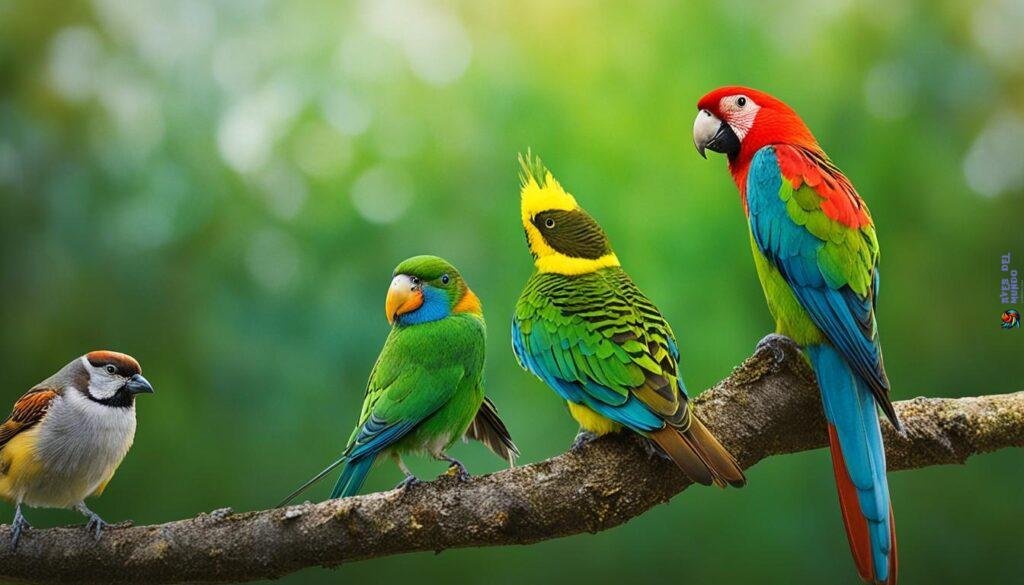
Nest Protection Strategies and Female Coloration
Female birds, particularly those caring for young, need camouflage. Their colors often resemble their surroundings. This is crucial for nest protection. Such adaptation makes them less visible to predators, mixing survival needs with plumage purposes.
Predator Deterrence and Warning Colors
Some birds use their feathers to warn predators. They show off bright warning colors to suggest they might taste bad or are toxic. This visual signal helps keep them safe. It shows how feather colors are vital in avoiding danger.
- Camouflage: Feathers blend into the habitat, protecting birds from predators.
- Attraction: Bright plumage helps in attracting mates during the breeding season.
- Ecological function: Colors serve both as a survival mechanism and a mating advantage.
- Nest protection: Mottled colors in females aid in hiding nests from threats.
- Predator deterrence: Vivid hues can signal danger, discouraging predation.
- Warning colors: Certain patterns alert other animals to potential risks, like toxicity.
Observing Avian Feather Coloration Patterns in Different Habitats
The world of feather coloration patterns reveals the impact of avian habitats. Tropical forests, bursting with color, support birds with vivid feathers. These birds’ plumage isn’t just beautiful. It helps them blend into their environment.
Temperate zone habitats provide a stark difference. Here, birds have more subtle colors due to resource scarcity and less natural cover. Their muted colors help them stay hidden from predators and prey.
Size affects bird coloration too. Large birds often have bold patterns, using size as a defense. Smaller birds, however, use discreet colors to avoid being seen. This highlights the connection between size, plumage, and environment. Observing these patterns enriches bird-watching and reveals nature’s complexity.
